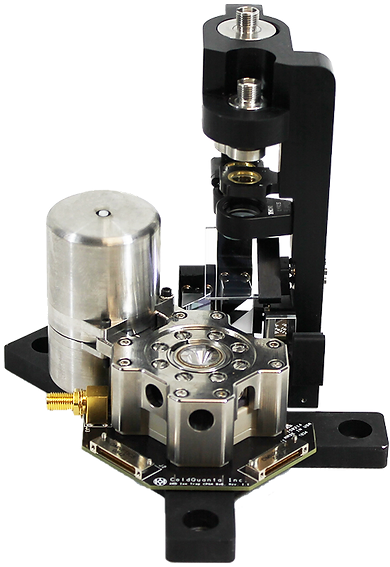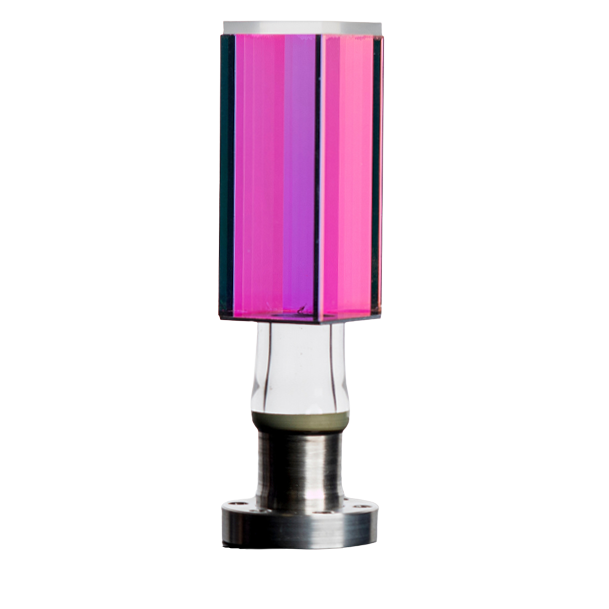
Compact Ion Trap Package


Compact Ion Trap Package
The trap surface is ion milled before assembly into an UHV-baked chamber to provide an ultra-clean ion trap surface. The C-cut sapphire window material ensures a low birefringence and high UV transparency. The housing was initially designed to house a Sandia HOA trap and has been adapted to the Peregrine and Phoenix ion traps.

Features
- Compact UHV cell
- Titanium body
- AR-coated C-cut sapphire windows
- 2 through axes at a 45-degree angle .12-.65 NA optical access
- < 3 x 10^(-11) Torr vacuum pressure
- HOA or Peregrine trap compatible
- Adaptable to many chip traps
- Yb and Ba targets available
Customization Options
- Custom atom source
- Custom window coatings
- Adapt to your trap
- AR coating on windows

Related Products

Cryogenic Ion Trap Package
With Infleqtion’s cryogenic ion trap housings, you’ll have everything you need to take your ion trapping experiments to the next level! The cryogenic ion trap is designed with self-contained housings and offers a high-optical UHV environment for trapping ions with long trap lifetimes.

UHV Glass Cells
Infleqtion’s high-quality UHV glass cells offer new optical access to in-vacuum experiments. Assembled with an optical contacting process, the cells provide high-quality AR coatings while maintaining very high optical flatness in the cell walls, enabling minimal optical distortion through the cell.

Contact Us
Eastern U.S., Europe, Middle East, Japan, Australia
Find a Distributor
Western U.S. and Other Regions
Contact Infleqtion Sales
